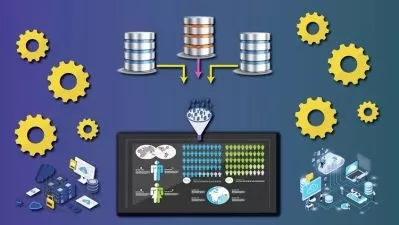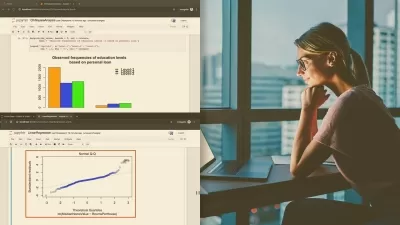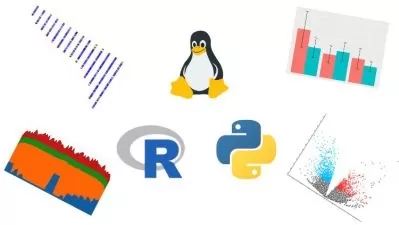Master R for Statistics and Data Science
Brian Greco
5:53:07
Description
A former Google data scientist teaches you R starting with the basics, and learning common tools for data science.
What You'll Learn?
- Master the basic parts of R like vectors and matrices
- Learn more complex data structures like data frames and lists
- Learn R's probability functions for simulating data and calculating probabilities
- Practice these skills using Udemy's built-in coding exercises
Who is this for?
What You Need to Know?
More details
DescriptionThis comprehensive R course starts from the very basics, covering vectors, matrices, data frames, and more, ensuring a solid foundation for beginners.
Start your journey to becoming an R expert today!
Key Features:
Learn R from scratch with a step-by-step approach
Hands-on exercises for practical experience
Understand data structures and data manipulation in R:
Vectors
Matrices
Data frames
Lists
Subsetting data
apply() functions on matrices
Learn about probability distributions and R's tools for probability.
r functions for generating random variables
d functions for finding the probability of single events
p functions for finding cumulative probabilities
q functions for finding percentiles
Learn about common probability distributions commonly used in data science, including the binomial, geometric, exponential, normal, Poisson, gamma, and uniform distributions.
Lifetime access to course materials and updates
Target audience and pre-requisites:
This course is designed for all levels, and assumes no prior knowledge of R. Some experience programming or analyzing data is helpful, but we will build all knowledge from scratch!Â
Some sections, especially in the second half of the course, will assume a foundation in basic algebra and arithmetic.
Start with the fundamentals of R programming, and gain proficiency in R to position yourself as a skilled data scientist.
Who this course is for:
- Aspiring data analysts or data scientists who want to learn R
This comprehensive R course starts from the very basics, covering vectors, matrices, data frames, and more, ensuring a solid foundation for beginners.
Start your journey to becoming an R expert today!
Key Features:
Learn R from scratch with a step-by-step approach
Hands-on exercises for practical experience
Understand data structures and data manipulation in R:
Vectors
Matrices
Data frames
Lists
Subsetting data
apply() functions on matrices
Learn about probability distributions and R's tools for probability.
r functions for generating random variables
d functions for finding the probability of single events
p functions for finding cumulative probabilities
q functions for finding percentiles
Learn about common probability distributions commonly used in data science, including the binomial, geometric, exponential, normal, Poisson, gamma, and uniform distributions.
Lifetime access to course materials and updates
Target audience and pre-requisites:
This course is designed for all levels, and assumes no prior knowledge of R. Some experience programming or analyzing data is helpful, but we will build all knowledge from scratch!Â
Some sections, especially in the second half of the course, will assume a foundation in basic algebra and arithmetic.
Start with the fundamentals of R programming, and gain proficiency in R to position yourself as a skilled data scientist.
Who this course is for:
- Aspiring data analysts or data scientists who want to learn R
User Reviews
Rating
Brian Greco
Instructor's Courses
Udemy
View courses Udemy- language english
- Training sessions 96
- duration 5:53:07
- Release Date 2024/05/18






![Selling Your IT Skills as a New Coder / Programmer [2024]](https://traininghub.ir/image/course_pic/43266-x225.webp)










